February 2019
Jon Lawrence (AAO) visits the IAA
19/02/19 18:04 Filed in: General
Jon Lawrence, Head of Technology of the Australian Astronomical Observatory (AAO), visited the IAA on Feb. 18-19. Jon spent his time in Granada to work with our group on the progress of the AAO feasibility study of LUCA at CAHA 3.5 m telescope. He also discussed with us the proposal of the AAO spectrograph, design by Robert Content, for the CASS spectrograph at the Schmidt.
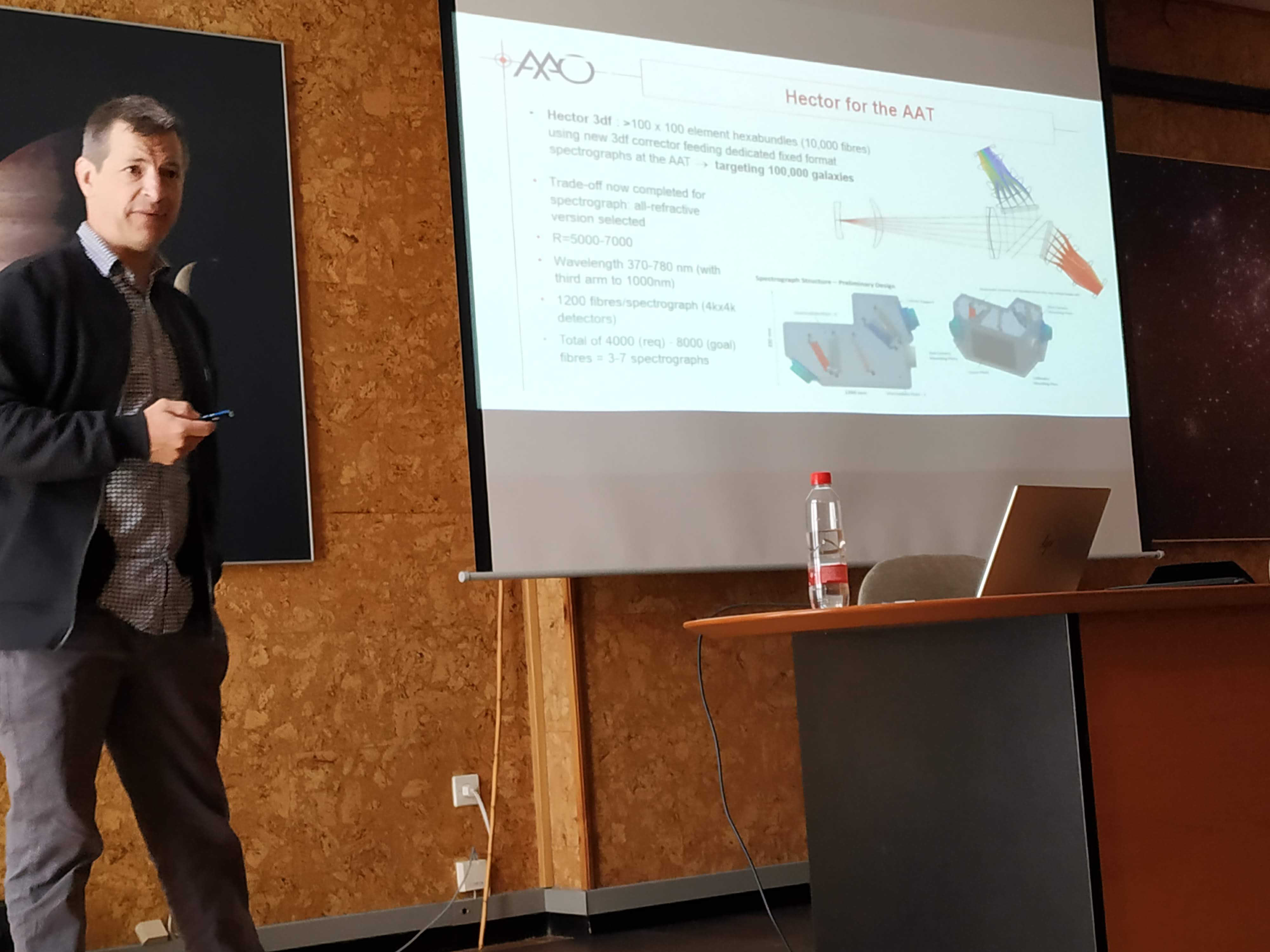
Jon presents the Hector spectrograph at his seminar "Instrument development at the AAO".

Jon presents the Hector spectrograph at his seminar "Instrument development at the AAO".
Assesment of Gaia Guiding Stars
15/02/19 11:10 Filed in: Telescope
We use the Gaia database through the astroquery interface to generate sky fields with stars. For the Schmidt scale at the focal plane of 86.20 arcsec/mm and a typical guiding detector of size 4x4mm (e.g. a CMOS 1000x1000 pixels of 4micron each) the FoV to search for guiding stars at any one location on sky is 5.75’x5.75’. To study the availability of stars for guiding, we generate random locations on a sphere and select 10000 fields with declination above -22.78º (so that maximum airmass < 2). We then count the stars brighter than a given magnitud (Gaia ‘phot_g_mean_mag’). The figure shows the percent number of these fields with at least one guide star brighter than a given magnitude. Clearly, basically almost any 5.75’x5.75’ location on the sky has guide stars brighter than 16 mag, which guarantees that we can guide by having a single CCD located at the Focal Plane next to the IFU (credit: Enrique Pérez).
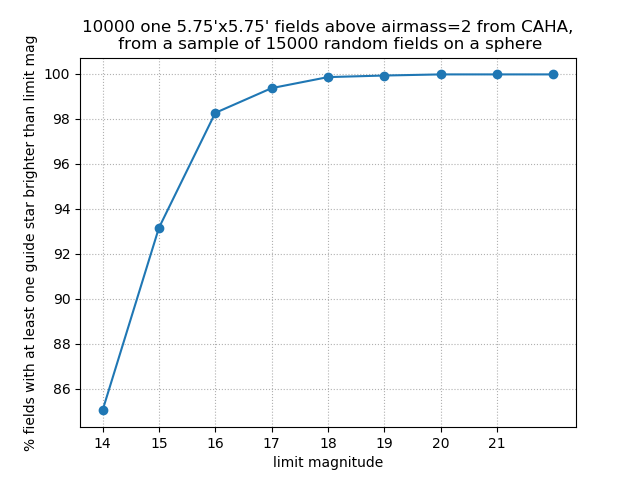

IFU cross-talk simulations
14/02/19 13:38 Filed in: Science
A single IFU pointing (cf. single pointing on M33) generates a spectral-spatial 2D image in the detector, with fibers arranged along the spatial direction. A slice of this image along the spatial direction is shown on the top plot of the enclosed image, with a zoomed in shown in the insert, where the single fiber PSF can be seen. A PSF model (e.g., a Gaussian) is fitted to each fiber PSF as shown in the bottom-left figure (in orange in the figure), and the cross-talk is defined as the fraction of the PSF that falls below neighbour fibers (darker orange wings). The two bottom-right figures give the values of cross-talk extracted for two different values of the fiber pitch at slit (the peak-to-peak separation of fibers along the slit) with values of 150 and 170 micron (credit: Enrique Pérez).
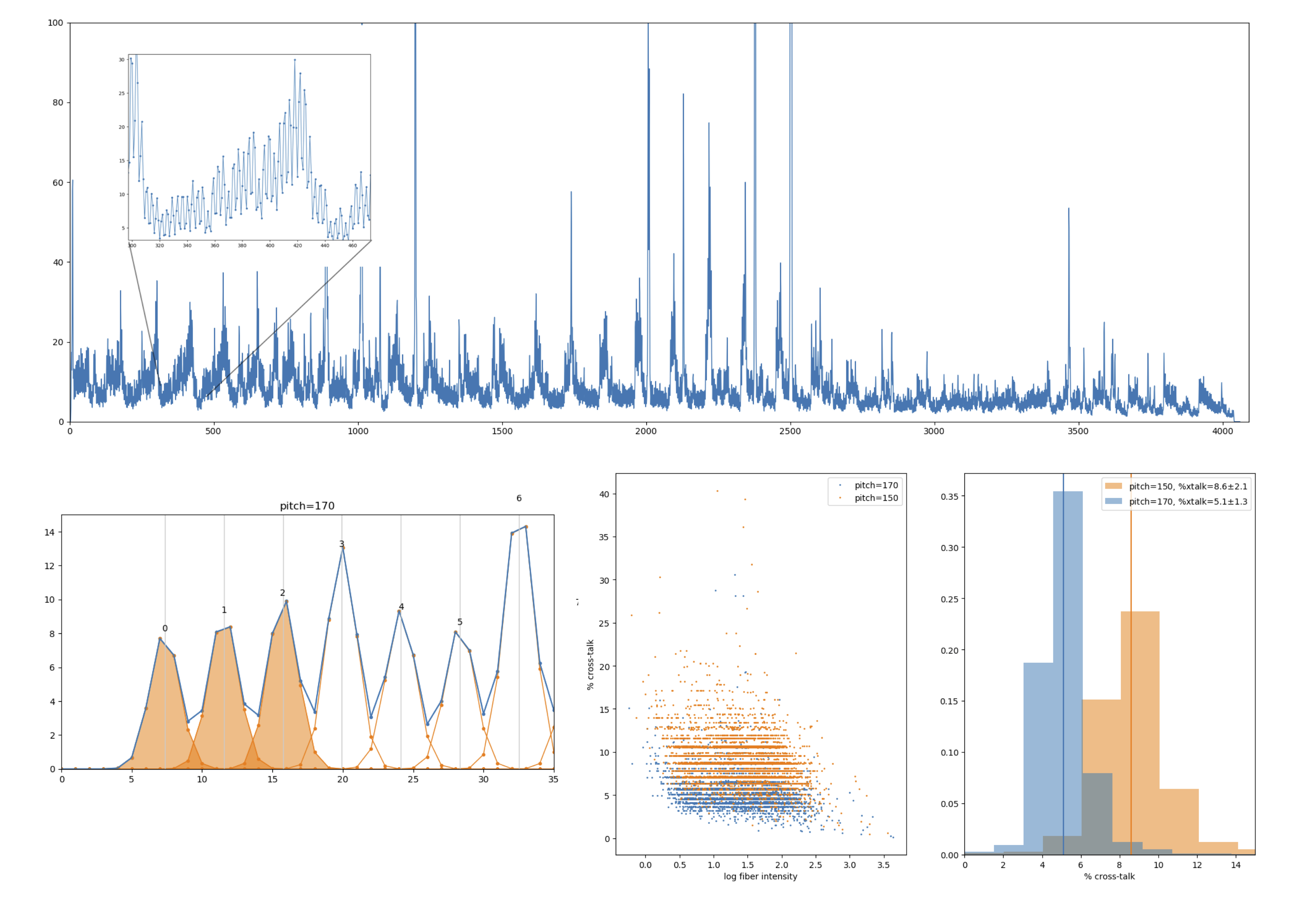

First actions on the Schmidt telescope
13/02/19 11:01 Filed in: Telescope
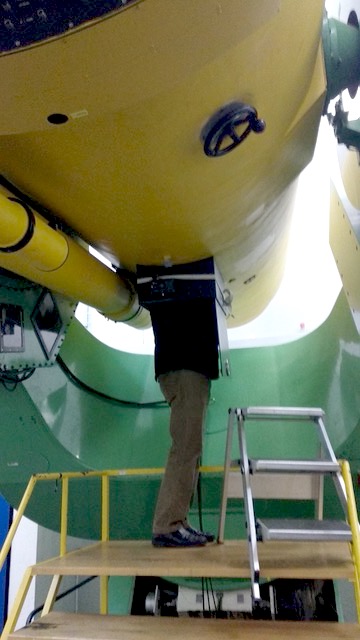
Assessment of the Focal Plane Assembly at the Schmidt telescope by a member of our engineering team. Work done in collaboration with the CAHA staff.
The Schmidt telescope at Calar Alto Observatory
02/02/19 15:47 Filed in: Telescope
The Schmidt telescope at Calar Alto Observatory was installed there in 1980 by the Max-Planck-Institut fuer Astronomie, Heidelberg, and originally it was located at the Hamburg Observatory since 1955. The corrector plate and mirror have 80 cm and 120 cm diameter respectively; focal length is 240 cm and focal ratio f/3. A field-of-view of 8 deg (335 mm) diameter is available with a plate scale of 86.2 "/mm. More details on the telescope can be found in this paper by Birkle et al. (1994).
Thousands of photographic plates taken with the Schmidt telescopes were scan as part the HDAP - Heidelberg Digitalised Astronomical Plates - project. The digitalised images can be downloaded form the GAVO database.
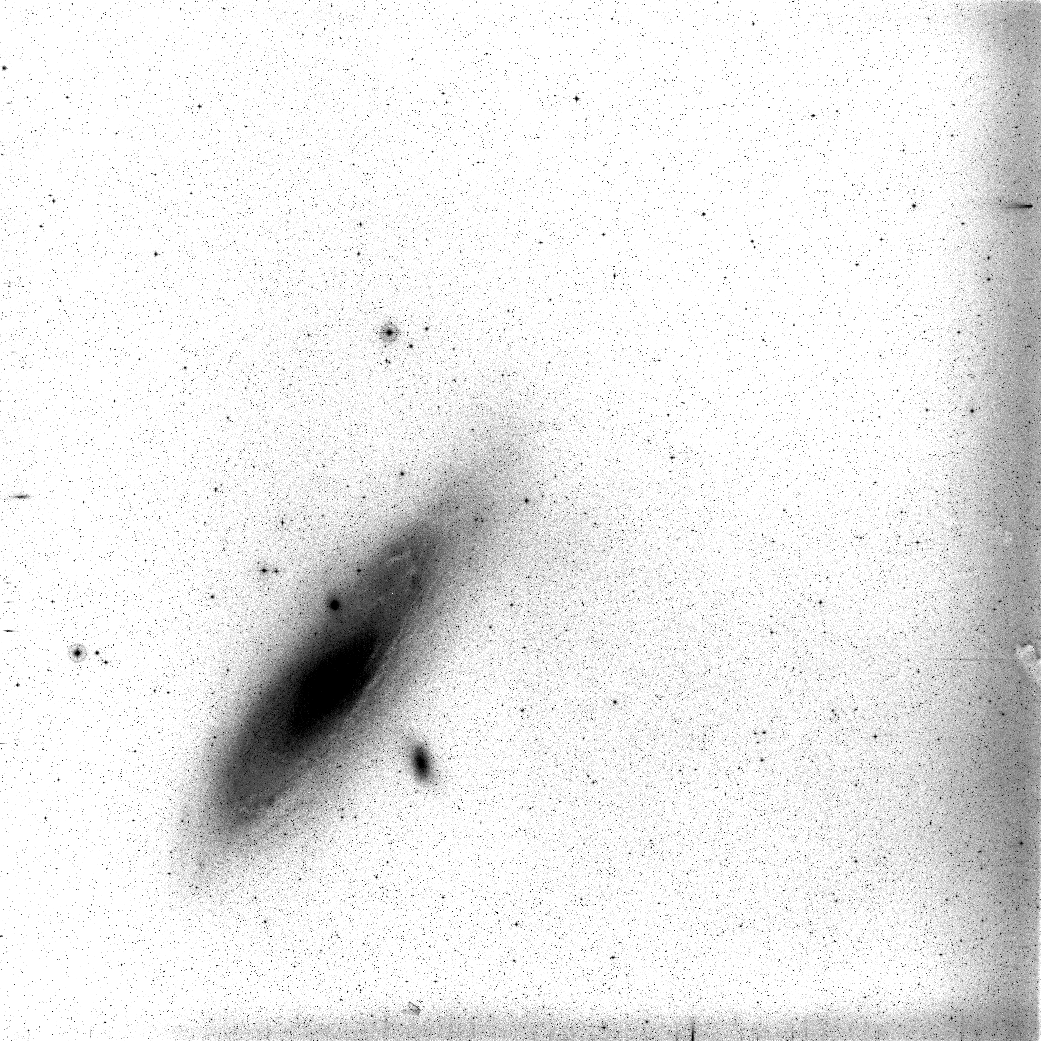
A digital image of 5.5 deg by 5.5 deg of the M31 field photographed on a Kodak 24 cm x 24 cm curved plate using the Schmidt telescope at Calar Alto (credit: HDAP).
Thousands of photographic plates taken with the Schmidt telescopes were scan as part the HDAP - Heidelberg Digitalised Astronomical Plates - project. The digitalised images can be downloaded form the GAVO database.

A digital image of 5.5 deg by 5.5 deg of the M31 field photographed on a Kodak 24 cm x 24 cm curved plate using the Schmidt telescope at Calar Alto (credit: HDAP).
Hierarchical structure in the Pan-Andromeda Archaeological Survey
01/02/19 20:38 Filed in: Science
The Pan-Andromeda Archaeological Survey (McConnachie et al. 2018) is a survey of 400 square degrees centered on the Andromeda (M31) and Triangulum (M33) galaxies. A dozen of distinctive substructures were detected and produced by at least 5 different accretion events, all in the last 3 or 4 Gyrs. A few of the substructures furthest from M31 may be shells from a single accretion event. M31’s halo seems to be dominated by two "mega-structures" that can be considered as the two most significant branches of a merger tree produced by breaking M31’s stellar halo into smaller and smaller structures. One of the streams could in fact be associated primarily with M33’s halo. The CASS hyper-spectral data cubes will contribute to understanding the formation of the Pan-Andromeda system.
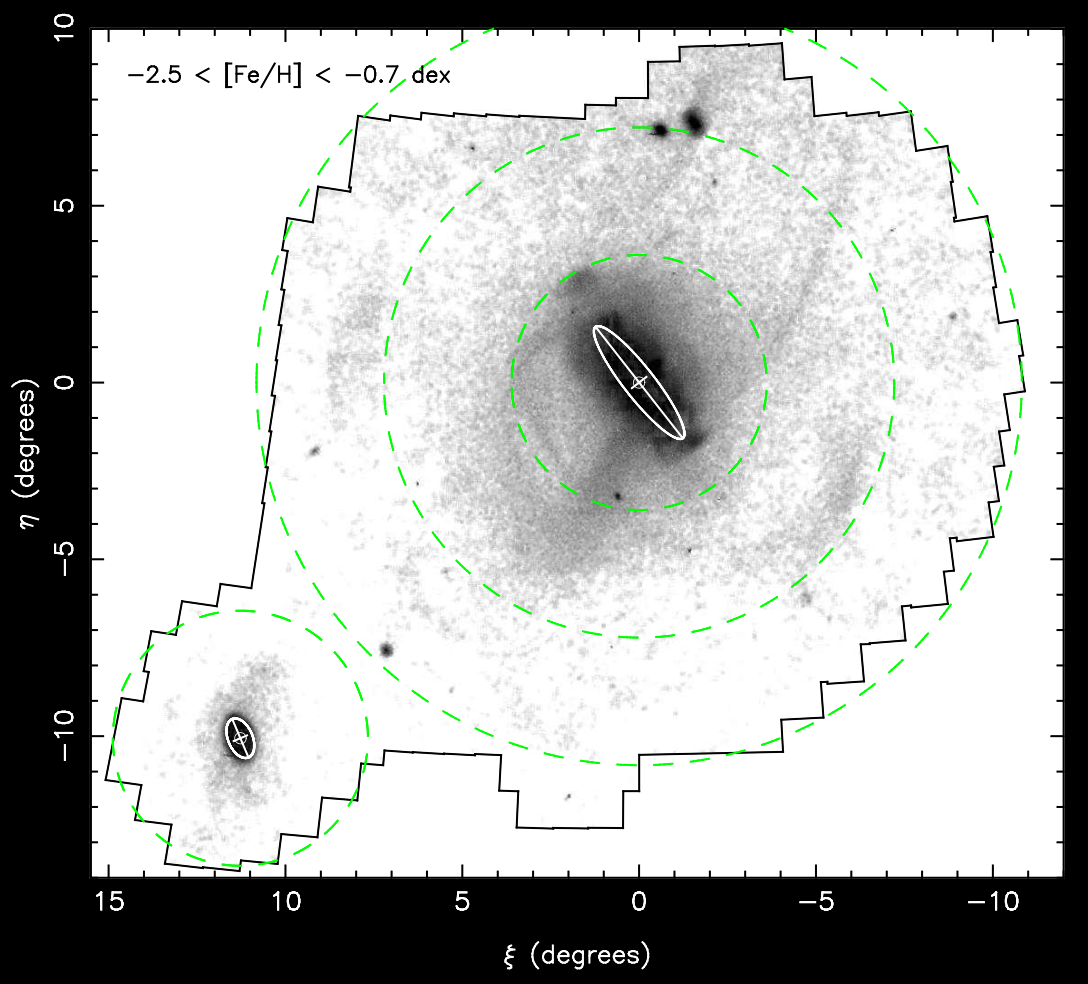
Tangent plane projection centered on M31 showing the spatial density distribution of candidate red giant branch stars. The dashed circles correspond to projected radii of 50kpc, 100kpc and 150kpc from M31, and 50 kpc from M33 (Figure 11 in McConnachie et al. 2018).
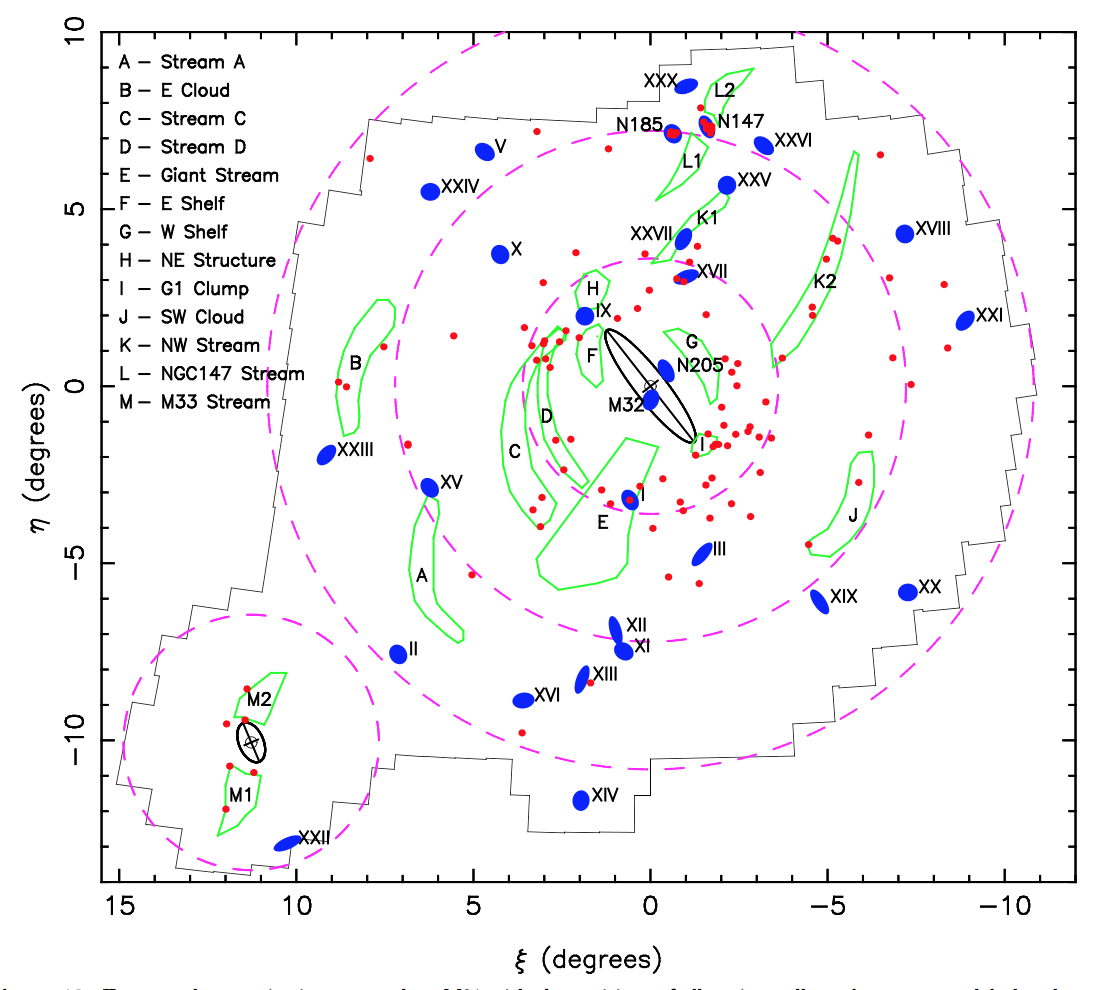
Tangent plane projection centered on M31 with the positions of all major stellar substructures, globular clusters and dwarf galaxies highlighted (Figure 12 in McConnachie et al. 2018).

Tangent plane projection centered on M31 showing the spatial density distribution of candidate red giant branch stars. The dashed circles correspond to projected radii of 50kpc, 100kpc and 150kpc from M31, and 50 kpc from M33 (Figure 11 in McConnachie et al. 2018).

Tangent plane projection centered on M31 with the positions of all major stellar substructures, globular clusters and dwarf galaxies highlighted (Figure 12 in McConnachie et al. 2018).
 CASS Blog
CASS Blog